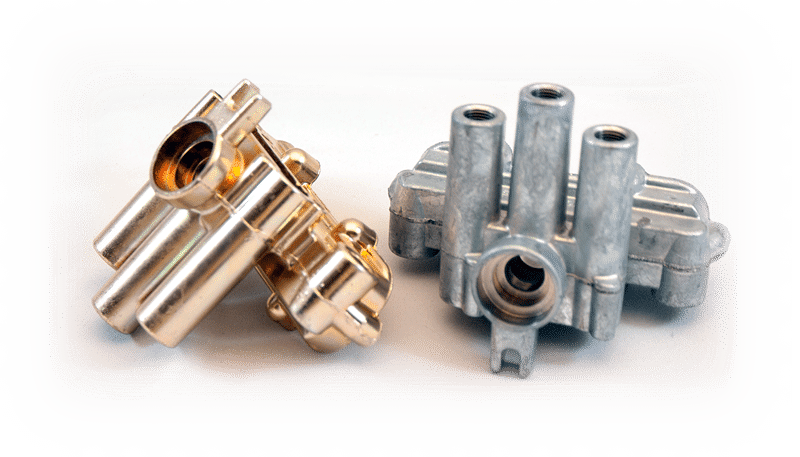Are you still using manual tools to cut through metal? Are you unhappy with your current cutting solutions? If you are looking for a more efficient and precise cutting solution, then plasma cutting might be just the process you are looking for. But with so many different plasma cutters and features available, it can be hard to know where to start. That’s why we’ve created this comprehensive guide to help you choose the best plasma cutter for your needs. From cutting speed and thickness to duty cycle and consumables, we’ll cover everything you need to know. So, let’s get started!
What is a Plasma Cutter and How Does it Work?

Before we dive into the selection criteria, let’s first clarify what a plasma cutter is and how it operates. A plasma cutter is a machine that uses an electrically conductive gas to transfer energy from a power supply to a conductive material, creating a high-temperature plasma arc that melts through the material and separates it into parts. The gas can be air, nitrogen, or a mixture of gases, depending on the material being cut and the quality of the cut required.
Plasma cutting is faster and more precise than traditional cutting methods, such as oxy-fuel and sawing, and can be used on a wide range of materials, including steel, aluminium, stainless steel, copper, brass, and even non-metallic materials like plastic and wood.
Key Factors to Consider when Choosing a Plasma Cutter

Cutting Capacity and Thickness
One of the most important factors to consider when selecting a plasma cutter is its cutting capacity, which refers to the maximum thickness of the material it can cut effectively. Cutting capacity varies widely between plasma cutters, from less than 1/4 inch to more than 2 inches, depending on the power output, the gas flow rate, and the quality of the consumables (electrodes, nozzles, and swirl rings). To determine the cutting capacity you need, you should consider the type and thickness of the materials you will be cutting most frequently, as well as the maximum thickness you may need to cut in the future. It’s always better to err on the side of a higher cutting capacity, as it allows you to tackle a wider range of projects and reduces the risk of overheating or damaging the machine.
Power Source and Input Requirements
Another important factor to consider when choosing a plasma cutter is its power source and input requirements. Plasma cutters can be powered by various sources, including AC (alternating current), DC (direct current), or a combination of both, depending on the model and the application. DC plasma cutters are generally more efficient and provide smoother cuts than AC plasma cutters, but they require a stable power supply and may not be suitable for use with generators or inverters.
The input requirements of a plasma cutter include the voltage, amperage, and frequency of the power supply, which can vary depending on the model and the country of use. It’s important to check the input requirements of a plasma cutter before purchasing it, to ensure that it is compatible with your power source and that you have the right power cord and plug.
Portability and Durability
The portability and durability of a plasma cutter are also important considerations, especially if you need to transport it frequently or use it in harsh or outdoor environments. Portable plasma cutters are usually lighter and more compact than stationary ones, but they may sacrifice some cutting capacity or performance. They may also require more frequent maintenance and replacement of consumables, such as air filters and torches.
The durability of a plasma cutter depends on its construction, materials, and design, as well as the quality of the components and the warranty provided by the manufacturer. A good plasma cutter should be built to last, with a sturdy metal frame, a reliable cooling system, and a long-lasting consumable set.
Additional Features and Accessories for Plasma Cutter
Finally, you may want to consider the additional features and accessories that come with a plasma cutter, which can enhance its versatility, ease of use, and safety. Some common features and accessories to look for include:
Pilot arc technology: This allows the plasma arc to start without touching the workpiece, which can prevent damage to the tip and improve the cutting quality on dirty, rusty, or painted surfaces.
CNC compatibility: This allows the plasma cutter to be integrated with a computer numerical control (CNC) system, which can automate the cutting process and produce more accurate and complex shapes.
Adjustable settings: This allows you to customize the cutting speed, amperage, and gas flow to match the material and thickness being cut, and to optimize the performance and consumable life.
Safety features: This includes things like thermal overload protection, overcurrent protection, and automatic shut-off, which can prevent the machine from overheating, short-circuiting, or causing injury.
Consumable kit: This includes all the necessary electrodes, nozzles, and swirl rings to keep the plasma cutter running smoothly and consistently, as well as spare parts and accessories for maintenance and repair.
Conclusion
We hope this guide has provided you with enough information to understand more about plasma cutting and to decide whether it is the right choice for your manufacturing projects. When working with Dragon Metal Manufacturing you have access to a network of ISO:9001 factories with the most advanced cutting technologies including plasma cutting, where we can cut thicknesses of up to 400mm. We also have a wide range of other cutting-edge manufacturing and fabrication technologies, and being an Australian company, we offer our full support, expert advice and our 100% quality guarantee. So, if you are looking for a one-stop solution for your metal fabrication needs, we’ve got you covered. Contact us today and let us help you take your cutting game to the next level!





